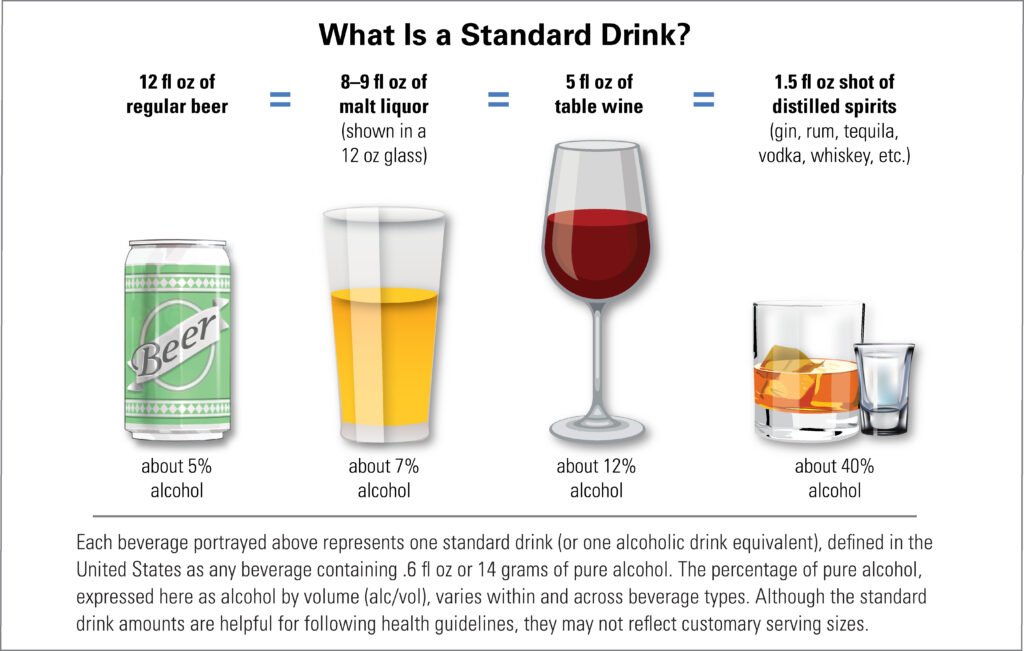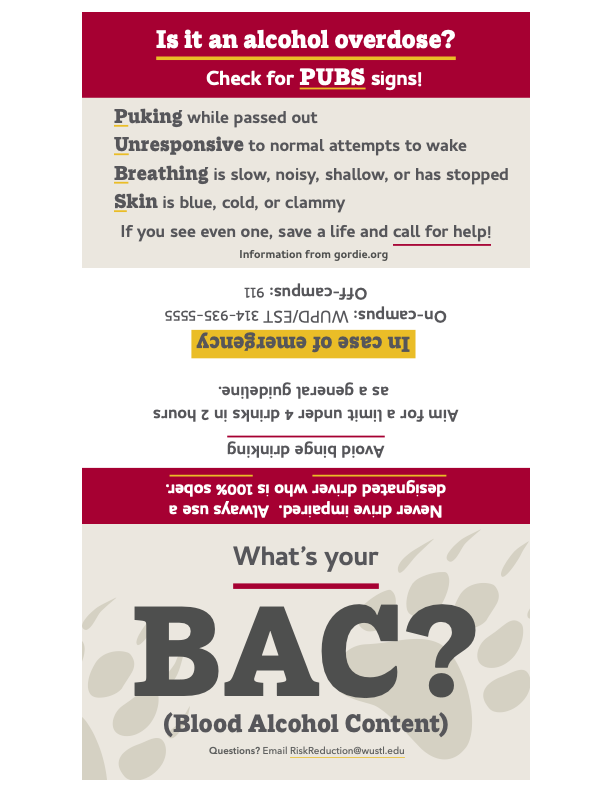If you choose to drink, drink responsibly. You can reduce your risk of an alcohol-related problem and still have fun with just a little education.
Lower-risk drinking tips
Reduce your risk of experiencing an alcohol-related problem:
| Eat before drinking: Food slows the rate of alcohol absorption. | |
| Reduce the rate at which you drink: Sip, don’t gulp! | |
| Keep track of how much you are drinking. Use an app such as Alcodroid Alcohol Tracker or Drink Control. | |
| Avoid mixing alcohol with other drugs. | |
| Alternate booze with nonalcoholic beverages to pace yourself and stay hydrated. | |
| Approach sexual activities with caution while under the influence of substances. When a person reaches a state of incapacitation, they can no longer consent to sexual activities. If there’s ever any doubt of a person’s ability to consent, consider a “rain check” for a later date. | |
| Plan a sober way home, a rideshare or a designated driver who has consumed no alcohol. |
Setting a drinking limit
| A “standard drink” refers to an alcoholic beverage that your body can process in about one hour. | |
| How much you pour for a standard drink depends on how concentrated your alcoholic beverage is. | |
| The higher the alcohol percentage, the less we pour for a standard drink size. | |
| The image below depicts some rules of thumb for standard drink sizes. Not all alcoholic beverages fit into these neat categories; some products contain higher concentrations of alcohol. To calculate the standard drink size for different alcohol products outside of the concentrations above, use this calculator. | |
| Try to stick as close to one standard drink per hour as possible to reduce your risk of negative outcomes. |

Moderate drinking
| Moderate drinking is associated with fewer negative health outcomes. | |
Moderate drinking consists of two drinks or less on a day someone drinks (for individuals assigned male at birth* and one drink or less on a day someone drinks (for individuals assigned female at birth*). | |
Binge drinking
| Considered a riskier form of drinking, in which a person consumes enough alcohol to reach a Blood Alcohol Concentration (BAC), of 0.08% or more. | |
| For individuals assigned female at birth*, this typically occurs after consuming 4 or more drinks in a 2-hour period. | |
| For individuals assigned male at birth*, this typically occurs after consuming 5 or more drinks in a 2-hour period. | |
| Avoid binge drinking to limit your risk of negative outcomes, including riskier sexual behaviors, accidents/injuries, and organ damage over time. | |
| For assistance in setting a limit, visit this BAC calculator to predict your BAC level and anticipated level of impairment based on your individual characteristics. |
*Assigned sex at birth is used only to help determine BAC and how alcohol may affect your body based on physiology. This may differ from your gender/gender expression. Unfortunately, there is not adequate research at this time to help us understand how taking hormones as part of a gender-affirming process may impact an individual’s experience of alcohol’s effects.
For all individuals, we recommend speaking with your doctor for personalized information about the impact of substances on your body.
Blood Alcohol Concentration (BAC) & impairment
BAC:
- Measurement of how much alcohol is in a person’s bloodstream.
- Indicates how impaired a person is from drinking.
- Factors that impact BAC:
- Food: If a person drinks on an empty stomach, the alcohol will be absorbed into their bloodstream faster. This results in a sudden spike in BAC.
- Rate of consumption: The faster a person drinks, the quicker their BAC will rise. This is because the liver needs time to process the alcohol (about one hour per standard drink). Drinking games can be dangerous, as they encourage individuals to drink a lot of alcohol in a short amount of time.
- Weight: People who weigh less will have a higher BAC than those who weigh more, even if they drink the same amount of alcohol.
- Sex: Sex assigned at birth impacts an individual’s BAC.
Note: A person can develop a tolerance to alcohol. This means a person would need to drink more alcohol to feel the effects they used to feel. Tolerance can be dangerous, as BAC still rises at the same rate even if a person doesn’t feel the effects.
Blood Alcohol Concentration (BAC)


The card to the left can be used to help estimate BAC after one hour of drinking based on sex assigned at birth and weight.
Download and print side 1 and side 2 of your own card, or
Drinking and medications
If you are taking prescribed or over-the-counter medications, talk with your doctor about possible interactions.
Mixing alcohol with certain medications can:
| Reduce medication effectiveness. | |
| Intensify impairment and cause side effects like vomiting, loss of consciousness, and breathing difficulties. | |
| Increase the risk of overdose. | |
| Commonly used medications and their interactions with alcohol. |
Alcohol poisoning
- Signs of alcohol poisoning:
- Puking while passed out
- Being unresponsive to normal attempts to awaken
- Noisy, slow, shallow, or stopped breathing
- Blue, cold, or clammy skin
- Seizure
- Set limits and pace yourself to help prevent alcohol poisoning.
- One of these signs can indicate alcohol poisoning.
- If you suspect someone is suffering from alcohol poisoning, call emergency services:
- Off campus, call 911.
- On campus, call EST at (314) 935-5555.
- WashU has a Medical Amnesty and Bystander Protocol to reduce barriers to calling for help.
Recognizing a problem
Signs that a person might be drinking too much
| You drink more or for a longer period of time than you intended. | |
| You attempt to cut down/stop drinking, but cannot. | |
| You continue to drink even though it causes health issues. | |
| Loved ones have made comments about your drinking habits. | |
| Your drinking interferes with daily activities and relationships. | |
| You have experienced withdrawal symptoms when not drinking (ex: shakiness, sweating, anxiety, insomnia, etc.) | |
| More information: Substance Abuse and Mental Health Services Administration. |
If you think that you or someone you know might have a problem with alcohol, it is important to see a doctor or mental health provider. If you are concerned about a friend’s substance consumption, check out our tip sheet for starting a conversation.
Resources
| Free Wellness Meeting: Students may schedule a 1:1 free, confidential appointment to receive support and discuss safer substance use: Visit the Student Health Portal and select “Alcohol and Other Drug- Wellness Meeting (initial).” | |
| WashU Recovery Community for students curious about or in recovery. | |
| Ursa’s Nite Life hosts free, substance-free events. Find their next event on their IG: Ursasnitelife | |
| Habif Medical Services | |
| Center for Counseling and Psychological Services | |
| TimelyCare 24/7 support | |
| Uncle Joe’s Peer Counseling | |
| Residential Life Policies | |
| WashU alcohol and other drug policies | |
| For information about other substances, visit the National Institute on Drug Abuse |